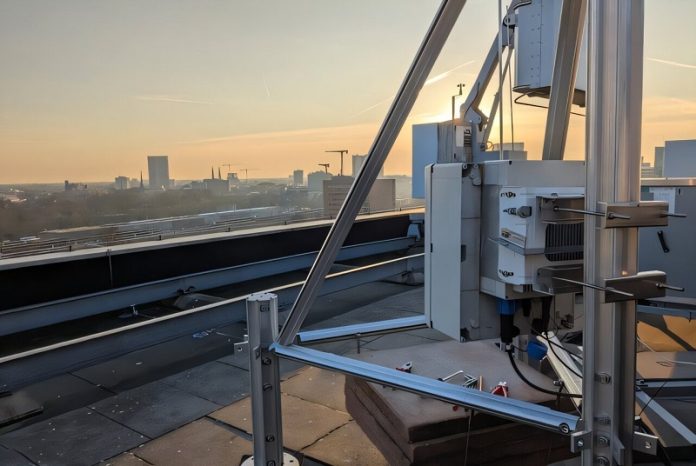
In a major tech breakthrough, researchers in Eindhoven have used invisible light to send data wirelessly across the city at an incredibly fast speed.
A team from Eindhoven University of Technology (TU/e), working with the company Aircision, successfully transferred data using infrared light over a distance of 4.6 kilometers between two campuses.
The speed?
A jaw-dropping 5.7 terabits per second—that’s like streaming nearly 2 million Netflix shows in HD at the same time.
This marks the fastest wireless data transmission ever achieved over such a long distance in a city setting.
Instead of using traditional cables or radio signals, the system uses a beam of infrared light that can’t be seen with the naked eye.
This technology is called free-space optical (FSO) communication and allows data to be transferred quickly and without interference.
The connection was set up between the Flux building on the TU/e campus in the north and building 37 at the High Tech Campus (HTC) in the south. Aircision, a company based at HTC and started by Dutch research institute TNO, provided the special antennas needed to send the light beam.
Vincent van Vliet, a Ph.D. researcher at TU/e, explains that this kind of wireless communication combines the best of both worlds: the speed of fiber-optic cables and the flexibility of wireless networks. It could help meet the growing global need for fast and reliable internet, especially in places where installing fiber cables is difficult or expensive.
The project used a new testing system called the Reid Photonloop, which is now permanently set up in Eindhoven.
It lets scientists experiment with sending multiple light wavelengths in a single beam, a method often used in fiber-optic cables but now tested in the air for the first time at this scale.
Because the infrared beams are so focused, many of them can work side by side without disrupting each other, opening the door to building massive, high-speed wireless networks.
This new testbed was presented at the Optical Fiber Communications Conference 2025 in San Francisco.
It is named after John Reid, a co-founder of Aircision who helped drive the project before sadly passing away.
Looking ahead, Aircision is exploring real-world uses for this technology, such as helping mobile networks connect 5G and 6G towers wirelessly.
Co-founder Luis Oliveira believes this success proves their technology is ready to change how we bring fast internet to people—quickly and without the need for cables.



